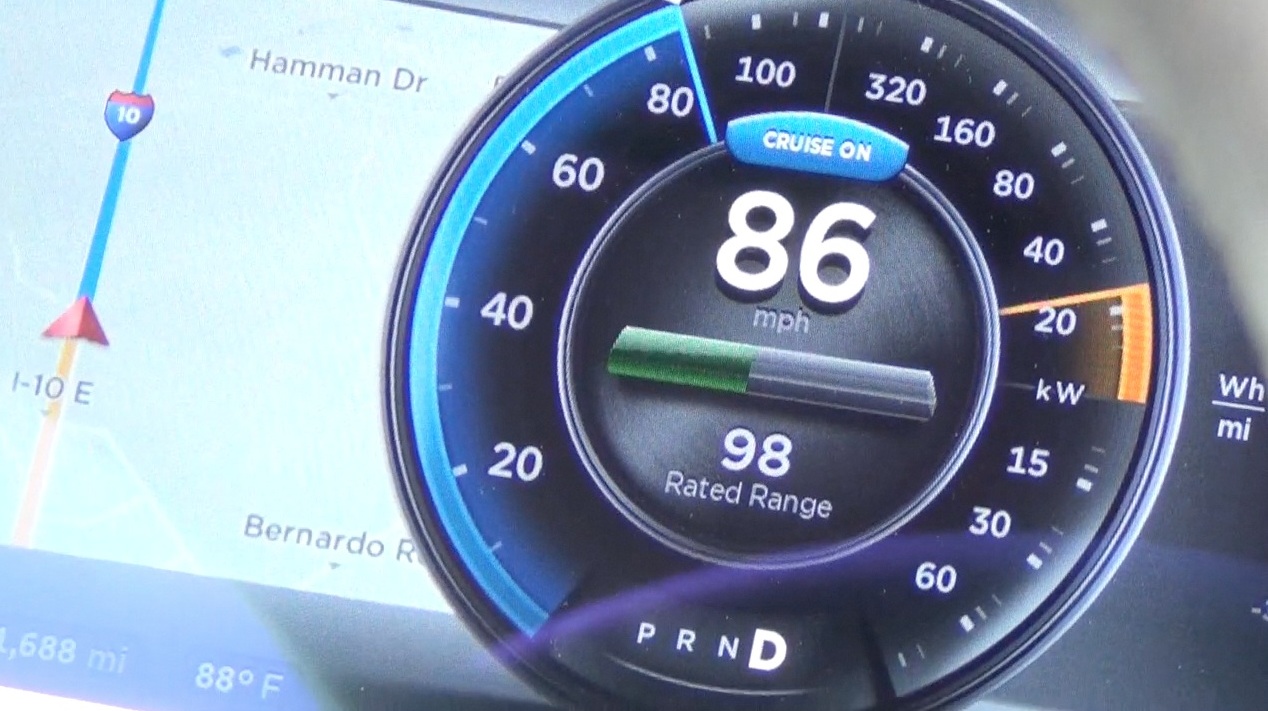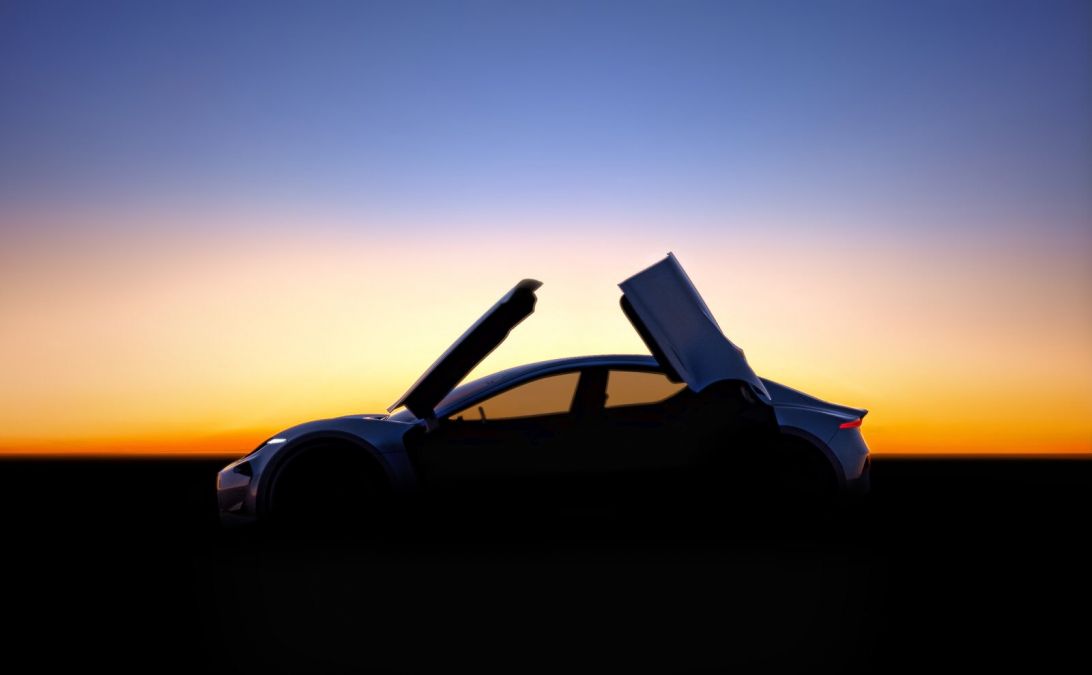
Rideshares’ benefits include reducing air and noise pollution as well as ease traffic
MOIA, the mobility startup from the Volkswagen Group just introduced its ride pooling concept just one year after its inception.
[perfectpullquote align=”full” bordertop=”false” cite=”” link=”” color=”” class=”” size=””]MOIA’s green goal is to remove one million cars from cities[/perfectpullquote]
The startup’s concept provides new mobility options that will significantly reduce traffic and help reduce air and noise pollution in major cities. MOIA will present its ride pooling ecosystem with the mission “One Million Cars off the Road” at TechCrunch in Berlin, where the first self-designed MOIA car, that is fully electric and optimized for ride pooling services, will make its debut.

Rideshare could be just as convenient as an Uber and help reduce traffic
[perfectpullquote align=”full” bordertop=”false” cite=”” link=”” color=”” class=”” size=””]“We started one year ago at TechCrunch in London with the vision of partnering with cities to improve the efficiency on their streets. We want to create a solution for the typical transport problems that cities face, such as traffic, air and noise pollution, and lack of space, while simultaneously helping them reach their sustainability goals. In a short time, we’ve laid the groundwork to add a new mobility component to the urban mix. In 2018, we’ll be ready to launch our ride pooling concept internationally and take the first steps toward our goal of reducing the number of cars in major cities by one million in Europe and the USA by 2025, says Ole Harms, MOIA CEO.”[/perfectpullquote]
[envira-gallery id=”1212″]
The entire program is slated to start by the end of 2018. “We’ll be able to offer the complete ride pooling value chain – as needed or just individual pieces,” says Harms. This is not a closed system, however, various operator models are available and can be developed with the cities and partners.
The centerpiece of the pooling system is the MOIA EV car. This will be presented at the TechCrunch public viewing. Along with the car, the system also utilizes a smartphone app, which passengers will use to book and pay for the Rideshare, similar to Uber’s and Lyft’s app. The app will show which cars are available and how much the ride will cost before a customer books a trip. A pooling algorithm groups passengers with similar destinations together in order to increase the capacity for each car and to avoid detours. A driver app and comprehensive fleet management complete the system.
[envira-gallery id=”1189″]
MOIA EV
The MOIA car is a full electric car that provides space for up to six passsengers.
The interior was designed to be spacious with standalone seats with plenty of legroom, and with enough headroom to stand and space to move around and reach each seat with ease. The car was developed and designed exclusively for ride pooling services. Convenience was built into the EV with features such as dimmable reading lights and USB ports. Each car also offers fast WiFi for passengers. The automatic passenger side door and handlebar make getting in and out of the car easy. There is a convenient luggage area where the traditional passenger seat used to be for riders luggage.
“The car represents total comfort and is a crucial piece of our consistent service experience. We developed it using our co-creation process, which involved multiple rounds

MOIA – Ole Harms
of potential users of various age groups testing cars and providing feedback. Many of the ideas from this process went directly into the development of the car. We’re also working on other future versions as well,” says Robert Henrich, MOIA COO.
Volkswagen Commercial Vehicles and Volkswagen Osnabrück planned, developed and built the MOIA car in record time: ten months. The car has a range of more than 300 kilometers according to WLTP-standard and can be charged up to 80 percent in about 30 minutes. “Together with MOIA and VW Osnabrück, we are redefining car manufacturing;” says Eckhard Scholz from the Executive Board of Volkswagen Commercial Vehicles. “We are very proud of the fact that we were able to build a new car specifically tailored to the needs of ride pooling in just ten months.” This accomplishment was made possible through the use of agile processes in the Osnabrück plant. The car will make its debut on the streets of Hamburg next year.
MOIA has been testing its service in Hannover since October 2017 and continuously developing its components in real time. The “MOIA co-creation process” is an integral part of this test, which consists of a fleet of 20 Volkswagen T6 Multivans.
For more information, go to https://www.moia.io/press/
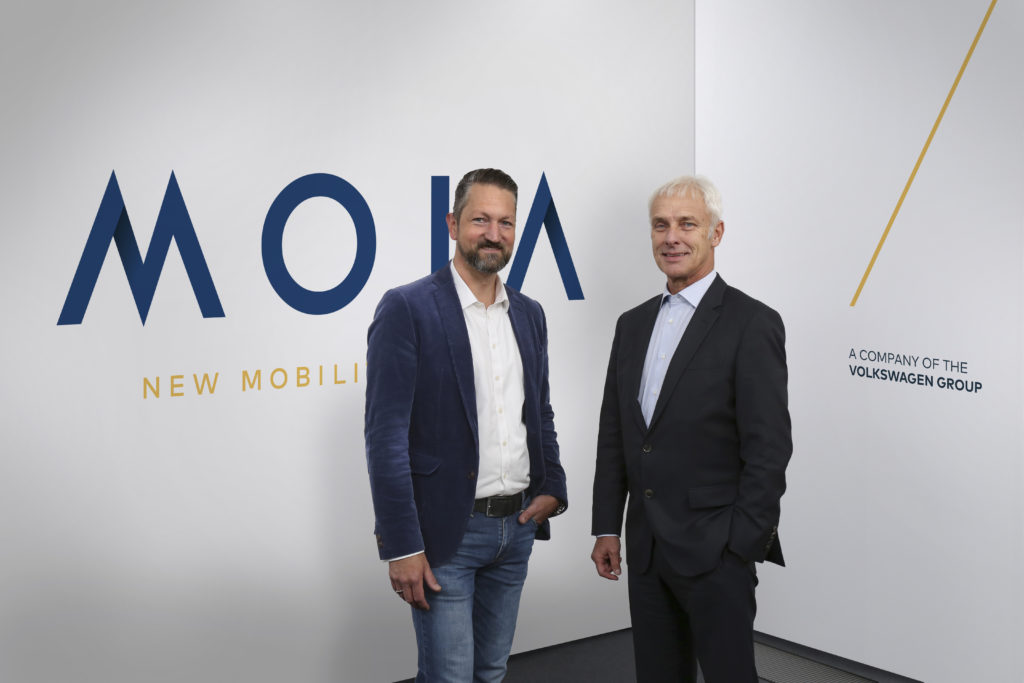
Ole Harms and Matthias Müller
About MOIA
MOIA is a 100% subsidiary company of the Volkswagen Group. The company, based in Berlin, Hamburg, and Helsinki, develops its own mobility services, working together with cities and public transportation organizations. MOIA is currently developing and implementing various services along the mobility value chain with multiple offerings for different user groups.
]]>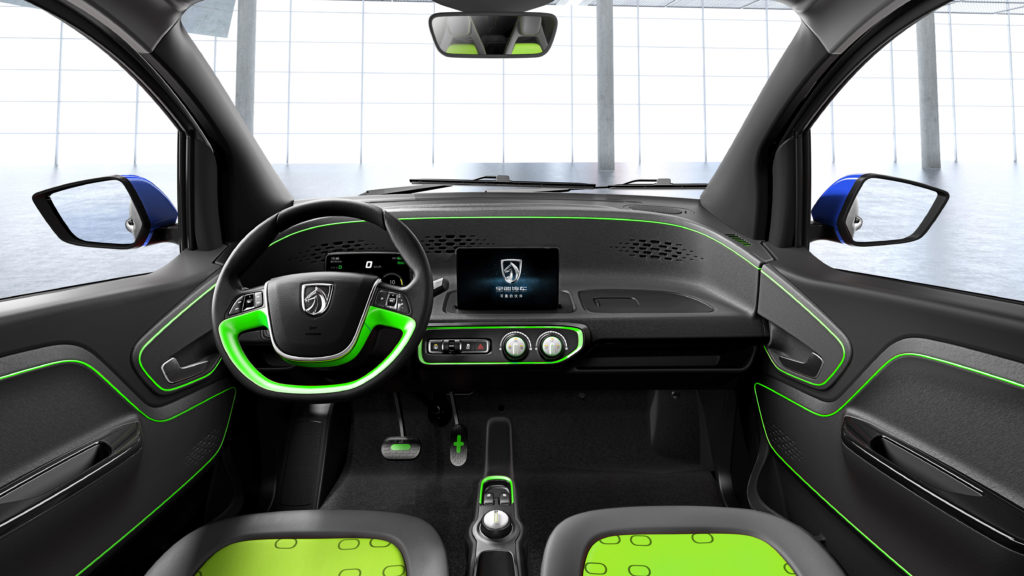
SAIC-GM-Wuling began limited pre-sales of the E100 in Liuzhou, Guangxi. Strong interest has has resulted in more than 5,000 people registering for the first 200 vehicles sold. Sales are initially limited to Guangxi, where the factory is located. As production ramps up, so will its distribution.
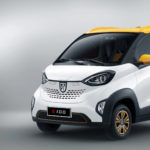


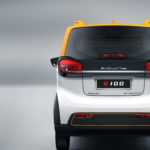
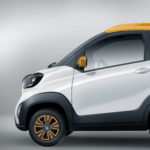
Baojun E100 Overview
Given the EV’s rather demure size, the E100 seats up to two adults quite comfortably. The cargo space is not listed but it appears rather limited to groceries or travel bags judging by the photos.
The vehicle has a maximum top speed of 100 km/h (62 mph), allowing it to travel on local roads and urban expressways in its native China. With a wheelbase of 1,600 mm (5.249 ft) and height of 1,670 mm (5.479 Ft) makes it about a foot or so shorter than the teeny Smart ForTwo. It has a turning radius of 3.7 meters enabling it to get in and out of tight spaces conveniently.
[perfectpullquote align=”full” cite=”” link=”” color=”” class=”” size=””]The size and range and abilities of the E100 makes it a rather excellent daily commuter.[/perfectpullquote]
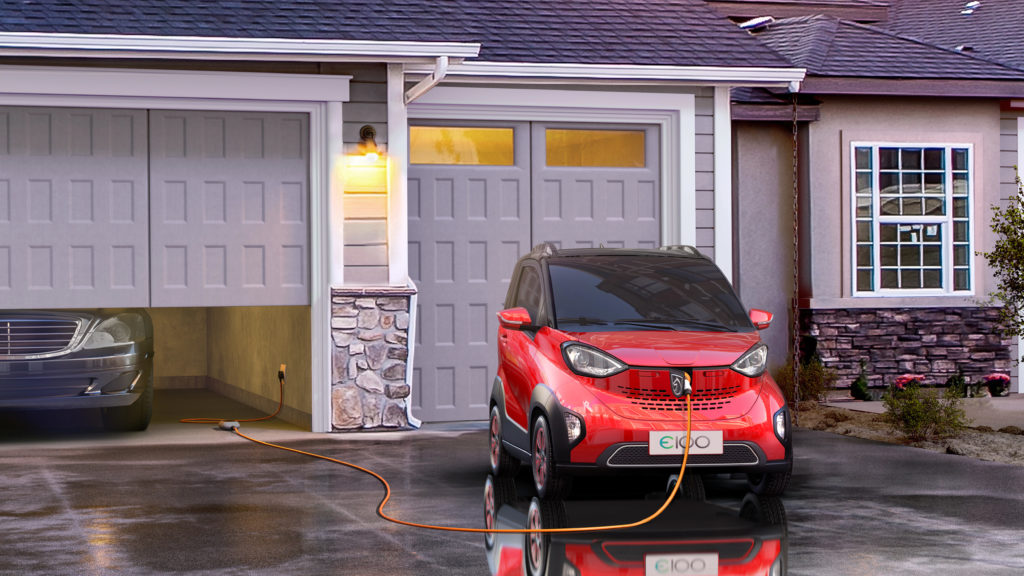
EV Battery Performance
The E100 has a single electric motor that produces 110 Nm of torque and 29 kW of motoring power. It can travel up to 155 km (96 miles) on a single charge. The lithium-ion battery pack can be fully charged in 7.5 hours. The Baojun E100, like many EV’s today is capable of capturing energy through a regenerative braking system to add charge back to the battery.
E100 Video
Safety
The E100 has an independent front-wheel suspension and single-arm rear suspension. Its impressive list of safety features includes anti-lock brakes with electronic brakeforce distribution, electric power steering, an electronic parking brake, parking sensors, ISOFIX locks for child safety seats.
The E100 has an air filter, parking sensors and a pedestrian alert system to optimize it for city use.
Given the EV’s rather demure size, the E100 seats up to two adults quite comfortably. The cargo space is not listed but it appears rather limited to groceries or travel bags judging by the photos.

Interior
The interior looks spartan, but in a neat and tidy way. Today’s cars no longer require a shifter, which is missing from the interior, replaces with a knob located between the seats. The drivers dashboard has a small screen with the vital functions. An available 7″ touchpad screen and Wi-Fi is centered on the dash. E100 users can enjoy their infotainment and remain connected while on the road.
The electric vehicle is also available with an air filter and keyless entry on the premium Zhixiang variant.


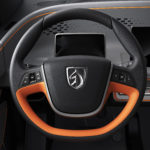
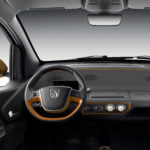
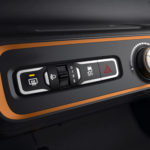
Baojun EV History
GM has 10 joint ventures, two wholly owned foreign enterprises and more than 58,000 employees in China. GM and its joint ventures offer the broadest lineup of vehicles and brands among automakers in China. More information on General Motors and China can be found at GM Media Online.
]]>The feat was accomplished by hypermiling a Tesla Model S P100D.
The Tesla Model S P100D rated range is 315 miles on a single charge.
Although The S model has an extra motor and thus extra weight, the trade-off is there is an extra 10 kWh of battery capacity. This provides the Model S with a 21 mile (34 km) range boost.
Even though there are a front and rear motor, the extra motor does not engage all the time.
Steven Peeters and Joeri Cools said they drove a Model S P100D around a closed loop in Belgium, adding that it took them 23 hours and 45 minutes to complete the feat.
Hypermiling involves driving a car at maximum fuel (or electrical) efficiency to see how long it can run on one charge or tank of gas
Among some of the Hypermiling techniques used to achieve this feat were…
Adjusting for speed:
Even a difference between 35 – 45 mph the fuel savings are drastic. They found 40 km/h (24 mph) to have the lowest possible energy consumption.
[perfectpullquote align=”full” cite=”” link=”” color=”” class=”” size=””]Peeters stated while driving without use of windows or A/C “It was just like sitting in hell and the sun was really burning”[/perfectpullquote]
Tires:
Adjusting the tire pressure way up to get the least resistance while still remaining safe on the road, for this trip it was set to 55psi or 3.7bar.
Cruise Control:
It was used in order to maintain the average speeds used
Using Efficient Routes:
— in this case trying to use roundabouts as to keep the car from frequent stops.
No Extra Electric Use:
— no use of extraneous electronics and that means no radio, windows or air conditioning!
Peeters stated while driving without use of windows or A/C “It was just like sitting in hell and the sun was really burning”
Although this is a case of extreme hypermiling, how far would you go to see how efficient of a driver you are?
]]>Fisker EMotion is slated to start at $129,900, With an Ultra Large Battery Pack Los Angeles, CA (June 6, 2017)—Fisker Inc. today released the design specifications and teaser photos of its 2019 production vehicle, the Fisker EMotion. The EMotion delivers an astounding over 400-mile electric range and a top speed of 161 mph.
Fisker EMotion: World’s most advanced EV. 400 mile + range, 9 min fast charging, autonomous & connected. Very proud of what we are creating! pic.twitter.com/7xWneZwMaT
— Henrik Fisker (@FiskerOfficial) June 10, 2017
The new EMotion is a clean sheet design from the inside out, utilizing a carbon fiber and aluminum structure to redefine the proportions of an electric vehicle. The vehicle’s design gives greater consideration than ever before to its passengers’ safety, comfort, and convenience. Fisker’s patented frontal crash structure exceeds current standards to protect all occupants. The cabin features a luxurious, spacious interior with superior rear legroom. Large ultra-light carbon fiber and aluminum wheels, developed in conjunction with Dymag, reduce rotational mass by 40%, further improving electric range.

The Fisker EMotion has been proportioned to accommodate an advanced highenergy density, patent-pending battery pack and cooling system. It can be charged through the vehicle’s proprietary UltraCharger technology, charging over 100 miles in nine minutes.
technology, charging over 100 miles in nine minutes.
The EMotion seamlessly combines technology into the design of the vehicle. The front end’s bright aluminum centerpiece houses a LIDAR system behind a tinted screen. Side mirrors conceal two cameras, which enable panoramic, 360-degree views to the driver.
-More WWW.FISKERINC.COM INFO@FISKERINC.COM
The EMotion has risen the bar of elegant design. Extreme aerodynamics include frontal, side, and rear carbon aero elements, as well as a low hood line surrounded by sculptural front fenders and a tapered green house with large sculptural rear fenders. The side DLO (Daylight Opening) is finished with a signature EMotion double-polished aluminum window molding. The rear end has a dramatic section with thin taillights, and an integrated lower carbon diffuser.
Reminiscent of how Tesla’s are sold, the EMotion will be sold directly through Fisker Inc.’s website and soon-to-appear experience centers. Servicing matters will be handled through The Hybrid Shop (THS), which is a joint venture between Fisker Inc. and THS.
 Fisker Service will provide its customers with a one-of-a-kind, white glove concierge service, providing Fisker owners a seamless day “free of interruption” for routine maintenance and servicing. At this current projected price tag, I wouldn’t expect anything less.
Fisker Service will provide its customers with a one-of-a-kind, white glove concierge service, providing Fisker owners a seamless day “free of interruption” for routine maintenance and servicing. At this current projected price tag, I wouldn’t expect anything less.
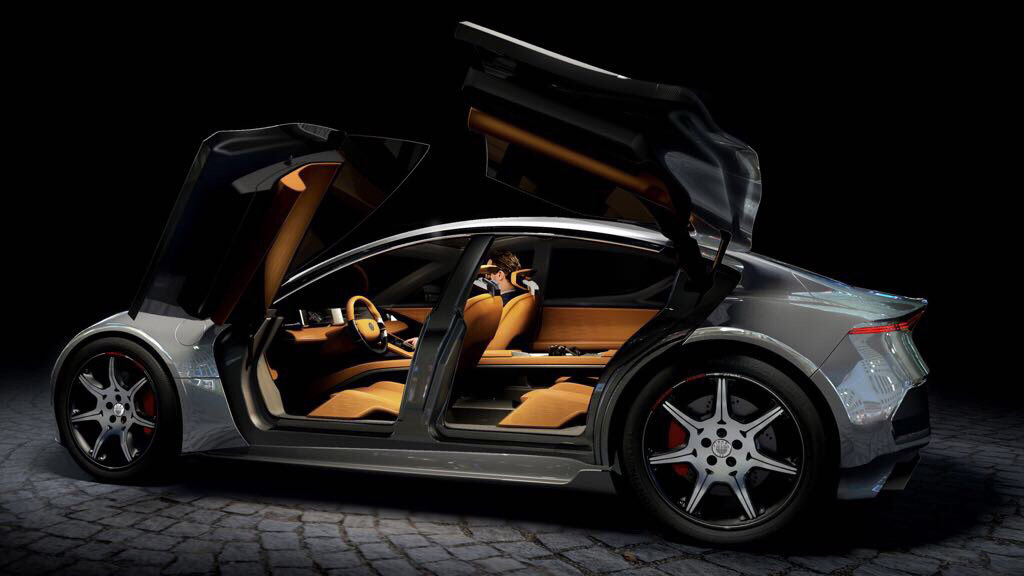
The company will be revealing additional information throughout June 2017. Preorders for the vehicle will officially begin June 30th at www.fiskerinc.com.
About Fisker Inc. About Fisker Inc. California-based Fisker Inc. is an American electric vehicle OEM revolutionizing the industry by developing electric vehicles with the world’s longest EV range. The brainchild of EV pioneer and world-leading automotive designer, Henrik Fisker, Fisker Inc.’s mission is to set a new standard of excellence and performance in the electric vehicle industry, developing unique, high-performance electric vehicles with disruptive design and battery technology. Only time and true testing will let us know if the EMotion will be a serious contender or just another rarity like it’s predecessor the Fisker Karma.
To learn more, visit www.fiskerinc.com.
]]>October 11, 1972, was a landmark day in the history of Honda. On that day at Tokyo’s Akasaka Prince Hotel, the CVCC engine was introduced in its entirety to journalists worldwide. With that the Honda CVCC worked it’s way into the Americana auto scene.
Several achievements with the CVCC were introduced:
- The engine could be made using existing reciprocating engines, which meant that current production facilities could be used. In addition, because the only change required was the replacement of a portion of the cylinder head, the CVCC system could be applied to other types of units, resulting in the proliferation of low emission engines.
- Because clean, complete combustion took place internally in the engine, additional devices such as catalytic converters were not necessary.
The ‘First Generation” Civic sold for about $2,200. The car put out about 50 hp and also included power front disc brakes, reclining bucket seats, and a woodgrain dashboard. Remember the good’ol AM radio? You got one with a CVCC. A four-speed manual transmission was standard. Options for the Civic were were basically air conditioning, an automatic transmission, radial tires, and a rear wiper for the hatchback. The car was rated 40 mpg-US on the highway, at the time this rating outperformed many American competitors such as the Ford Pinto and Chevrolet Vega. During the 70’s the nations gas crunch was felt by all drivers and pre-hypermilers were using the CVCC to get the best mileage out of their limited supply of gasoline at the time. It’s good to know that hypermilers were around then as well. Even Honda’s advertising campaign was, “Honda, we make it simple.”
Small, efficient and smartly designed is what you take away from the Honda. I remember the car back then and even then you know it was simply “better” in almost every way compared to it’s competition. The cars were also solidly built, it didn’t have that flimsy feeling that many American small cars had back then. Seems between panels were even, the design was solid, however there was an Achilles heel to the CVCC which was the very steel bodies themselves sere extremely prone to rust. So much so in fact that there was a recall.
American Honda Motor Company, signed a final consent decree with the FTC (Federal Trade Commission) that provided owners of 1975-1978 Civics with rusted fenders the right to receive replacements or cash reimbursements. That led to almost 1 million Honda owners being notified that their fenders could be repaired or replaced by the automaker at no charge. About 10% of all Honda’s sold were to be inspected by a dealer, and the automaker had 180 days to replace front fenders and supporting parts that showed rust within the first three years of use.
Finding a rust-free sample today is rare, but there are many enthusiast that have preserved them for the rest of us even with amount of CVCC’s that were produced.
[envira-gallery id=”371″]
]]>In the pursuit of hypermiling you are consistently tying to break your previous record best, VW has done exactly that. In order to demonstrate just how economical a normal diesel engine can be, VW sent a team out from its US headquarters in Herndon, VA, in a Golf TDI. Their mission would have been to visit every one of the Lower 48 on only using as little fuel possible. Throughout 16 days, they traveled 8,233.5 miles, burned through 101.43 gallons of fuel, and marked a frankly astonishing average of 81.17 mpg. As a result, hypermiling automotive journalist Wayne Gerdes (@CleanMPG) and electronics engineer Bob Winger (@bobwinger) picked up a whole new Guinness World Record to the lowest fuel consumption achieved in a non-hybrid car over the 48 contiguous states.
The first sort record, it’s important to note, had already been set by VW and Gerdes, who piloted a 2013 Passat TDI just a hair under 80 mpg. But here’s the kicker: in raising the diesel economy bar even higher, the group also beat the record for similar achievement inside a hybrid vehicle by over six mpg.
[box color=”lgreen”]So the very next time someone tries to tell you a hybrid is a bit more efficient than the usual diesel, you’ll be able to point them towards this record.[/box]
The below statement comes from VW’s own website, I’ll state that the original links from their press page is now gone but this statement from their website still remains!
[accordions]
[accordion title=”Press Release”]
Press Release
HAPPY BIRTHDAY TO THE DIESEL ENGINE!
Aug 9, 2013
Volkswagen commemorates the 120th anniversary of the first diesel engine
Herndon, VA – On August 10th, 120 years ago, Rudolf Diesel fired up his first engine that ran on the compression-ignition principle, one that is more commonly known by his surname. The diesel.
It is highly unlikely that Diesel—who died 100 years ago this September—could have possibly conceived how the engine bearing his name would revolutionize the world’s energy and transportation platforms. And, no doubt, he would have been surprised and delighted that more and more car buyers in America are discovering the advantages of Clean Diesel engines: excellent fuel mileage, smooth running, and mid-range torque that gives effortless passing power.
More than 75 percent of the diesel engines that are sold in the passenger car and SUV segments in the United States can be found under the hoods of Volkswagen models. Ever since 1977, when Volkswagen first offered a diesel in the Rabbit, the company has sold more than one million cars and SUVs powered by these engines in the U.S.
So far in 2013, Volkswagen has sold 56,480 TDI® Clean Diesel cars, representing nearly a quarter of the cars it sells. Volkswagen offers Clean Diesel technology in seven different models, six of which get an EPA estimated fuel economy rating of 40 mpg or more on the highway. Nearly 40 percent of Passat models sold in July had the 2.0-liter, turbocharged, direct-injection, common-rail TDI engine, which has an EPA estimated highway fuel economy of 43 miles per gallon when equipped with the six-speed manual transmission. This enables the Passat TDI to go 795 highway miles before needing to refuel.
To demonstrate the benefits of the TDI Clean Diesel engine, two teams of expert drivers recently set mileage records in a Volkswagen Passat TDI with a manual transmission. In 2012, a Passat recorded 1626 miles on a single tank of clean diesel fuel, at an average of 84.1 mpg. This past June, Wayne Gerdes and Bob Winger set a new Guinness World Records® achievement for the “lowest fuel consumption—48 U.S. States for a non-hybrid car” category at 77.99 mpg after an 8122-mile drive around the country, more than 10 mpg better than the previous mark. The achievement also beat the hybrid vehicle record of 64.6 mpg.
The good diesel news will continue to get even better in 2014, when Volkswagen will introduce its new EA288 2.0-liter TDI Clean Diesel engine, offering both more horsepower and even better gas mileage. At the recent Center for Automotive Research’s Management Briefing Seminars in Traverse City, Michigan, Oliver Schmidt—Volkswagen’s General Manager of the Office of Engineering and the Environment—confirmed the new engine. “The Volkswagen Group is a leader in clean diesel technology,” said Schmidt. “With the introduction of the new EA288 engine, we are excited that our family of TDI Clean Diesel vehicles is continuing to improve and will be even more clean, fuel efficient, and powerful.”
Clean Diesel engines are just one part of Volkswagen’s approach to sustainable mobility, encapsulated by the Think Blue.® philosophy. Volkswagen employs a wide range of powertrains—diesel, electric, hybrid, and intelligently downsized turbocharged gasoline engines—in its quest to be among the most eco-conscious automakers in the world. That approach extends to the factories in which the cars are built and the processes by which they are made.
About Volkswagen of America, Inc.
Founded in 1955, Volkswagen of America, Inc., an operating unit of Volkswagen Group of America, Inc. (VWoA) is headquartered in Herndon, Virginia. It is a subsidiary of Volkswagen AG, headquartered in Wolfsburg, Germany. VWoA’s operations in the United States include research and development, parts and vehicle processing, parts distribution centers, sales, marketing and service offices, financial service centers, and its state-of-the-art manufacturing facility in Chattanooga, Tennessee. The Volkswagen Group is one of the world’s largest producers of passenger cars and Europe’s largest automaker. VWoA sells the Beetle, Beetle Convertible, Eos, Golf, Golf R, GTI, Jetta, Jetta SportWagen, Passat, CC, Tiguan, and Touareg vehicles through approximately 600 independent U.S. dealers.
Notes:
This press release and images are available at media.vw.com. Follow us @VWNews: #VWTDI, #VWThinkBlue.
“TDI”, “VW”, “Volkswagen”, all model names and the Volkswagen logo are registered trademarks of Volkswagen AG. “GUINNESS WORLDS RECORDS” is a trademark of Guinness World Records Ltd.
Features and technical data apply to models offered in the USA. They may differ in other countries.
Available EPA fuel economy estimates are provided and identified as such. All other fuel economy values are forecast manufacturer estimates for the USA; EPA estimates for those models were not available at time of release. Individual mileage will vary and depends on several factors including driving habits and vehicle condition.
[/accordion]
[/accordions]
]]>
